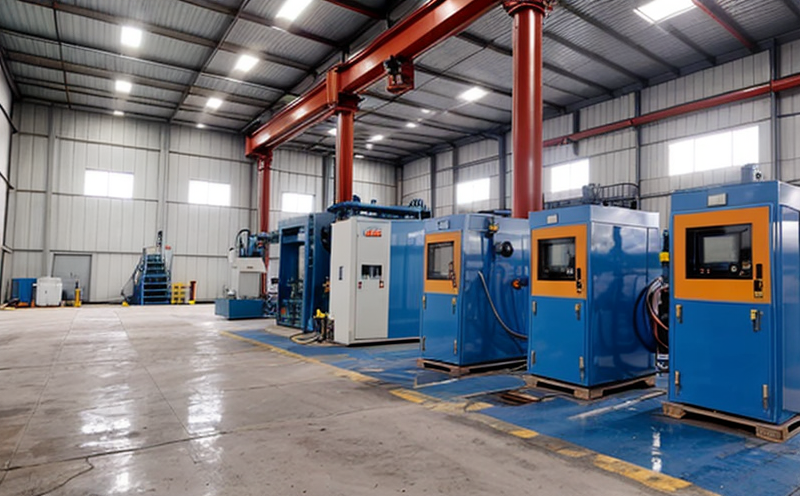DIN 51081 Thermal Conductivity Testing of Mineral Powders
The DIN 51081 standard is a crucial method used to determine the thermal conductivity of mineral powders, which plays an essential role in various industrial applications. This test is particularly important for industries such as ceramics, construction materials, and electronics due to its ability to ensure quality and performance consistency across batches of minerals.
The thermal conductivity of minerals can significantly impact their performance in different environments. For instance, in the construction sector, it affects insulation properties; in electronic components, it influences heat dissipation capabilities. Understanding these characteristics is vital for optimizing product designs and ensuring they meet regulatory standards and customer expectations.
According to DIN 51081, thermal conductivity testing involves measuring how efficiently a material transfers heat through its mass under specified conditions. The test typically uses sophisticated equipment like guarded hot plate apparatuses or transient plane wave instruments (TPWIs). These devices allow for precise measurement of the temperature difference across a sample while maintaining consistent boundary conditions.
The methodology described in DIN 51081 ensures that results are accurate and reliable, regardless of the type or origin of the mineral powder being tested. This standardization helps manufacturers maintain consistent quality levels throughout their production processes and allows for better control over product performance attributes like thermal resistance.
By adhering to this international guideline, companies can demonstrate compliance with relevant regulatory requirements while also enhancing their reputation among customers who value high-quality products made from well-characterized raw materials. Moreover, accurate knowledge of a mineral's thermal conductivity enables engineers to design more efficient systems that optimize energy usage and reduce operational costs.
In summary, DIN 51081 provides a robust framework for assessing the thermal properties of mineral powders. Its application ensures consistent quality in industrial processes involving these materials, thereby promoting innovation and sustainability within relevant industries.
Scope and Methodology
The scope of DIN 51081 encompasses the measurement of steady-state conductive heat transfer through compacted layers of mineral powders. This standard covers various types of minerals commonly used in industrial applications, including but not limited to quartz sands, limestone particles, and talc flakes.
One key aspect of this test is preparing the samples correctly before testing begins. Samples must be representative of the intended application and free from contamination that could affect results. Typically, samples are compacted into cylindrical specimens using predetermined pressures specific to each mineral type as specified in DIN 51081 Annex A.
The thermal conductivity measurement itself involves placing these prepared specimens between two plates within a controlled temperature environment. One plate is heated while the other remains at ambient temperature. Temperature sensors monitor the rate of heat flow through the sample, allowing calculation of its thermal resistance and thus thermal conductivity.
It's important to note that different minerals exhibit varying degrees of porosity and particle size distribution which can influence test outcomes significantly. Therefore, careful selection and preparation of samples are critical steps in obtaining reliable data according to DIN 51081 guidelines.
Why Choose This Test
Selecting the appropriate thermal conductivity testing method is crucial for ensuring accurate results that reflect real-world conditions accurately. For industrial minerals, particularly those used in construction or electronic components manufacturing, understanding their thermal behavior can lead to significant improvements in product design and performance.
One primary advantage of DIN 51081 lies in its ability to provide consistent measurements across different laboratories worldwide. This consistency enhances trust among stakeholders involved in mineral processing and utilization industries. With standardized procedures outlined by this international guideline, researchers and manufacturers alike can compare results more effectively when developing new products or refining existing ones.
Furthermore, compliance with DIN 51081 helps companies meet regulatory requirements set forth by governing bodies like the European Commission or national standards organizations. By adhering to these stringent guidelines during product development stages, firms demonstrate their commitment to producing high-quality materials that contribute positively to environmental protection efforts.
Customer Impact and Satisfaction
The implementation of DIN 51081 thermal conductivity testing has numerous positive impacts on both customers and suppliers in the mining industry. For end-users like construction companies, electronics manufacturers, or chemical processors, having access to reliable data about the thermal properties of minerals ensures they select appropriate materials for their projects.
Suppliers who undergo rigorous testing according to DIN 51081 can enhance customer satisfaction by providing consistent products that meet specified performance criteria. This reliability fosters long-term relationships and builds trust between suppliers and customers, ultimately driving business growth.





